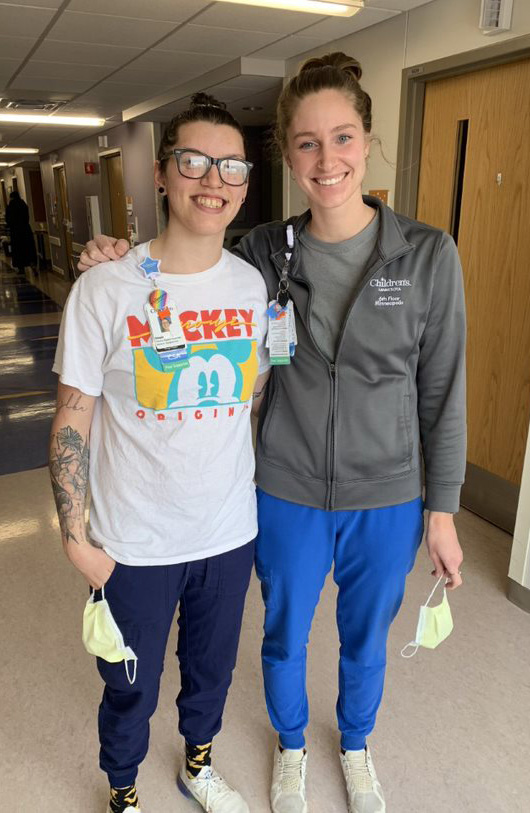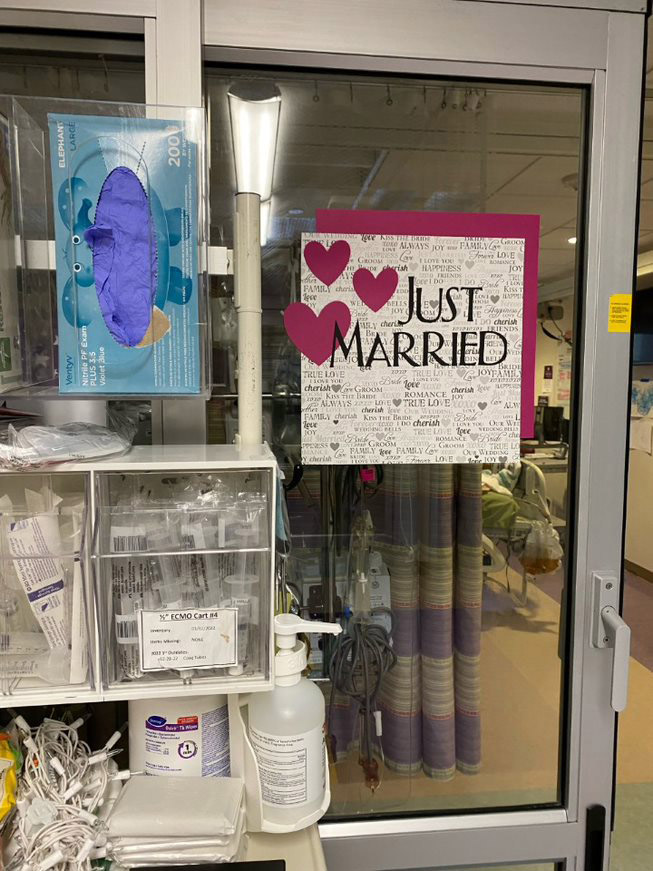Addressing health care disparities is often focused on transforming health care providers’ behaviors and helping them overcome biases when treating diverse patients. Everyone is susceptible to bias, and more work needs to be done to overcome individual and collective preconceptions to improve health outcomes for Black and Brown people. However, there is another important part of this conversation that also needs to be addressed: structural racism in health care, including policies that are established and followed with little to no question. After all, “that’s how we’ve always done it,” right?
Children’s Minnesota’s surgery policy S100 required all hair braids be removed prior to surgery. It was put in place after one child with braids experienced traction alopecia, or hair loss caused by damage to the hair follicle as a result of repeated tugging or sustained tension, during surgery several years ago.
This policy was found to negatively and inequitably impact Black children, especially young Black girls. Black families wear braided hairstyles for multiple reasons, including ease of care (especially post-op), to maintain a neat appearance and as a symbol of cultural pride. The braided hairstyles take several hours to create and can cost hundreds of dollars. While this wasn’t the intent, the implementation of the policy resulted in Black children and their caretakers being emotionally traumatized when faced with a culturally insensitive ultimatum: remove your braids immediately or cancel the surgery.
Surgeries are already high-stress events for patients and their families, and The Kid Experts™ at Children’s Minnesota only want to ease that stress while providing high-value, equitable care. Adriene Thornton, MAOM, BSN, CIC, FAPIC, manager of health equity, led the efforts to deliver on that patient promise. Tristessa Johnson, health equity coach, collaborated with nurses in surgery, CVOR and radiology to educate staff and implement the policy change throughout the organization.
After conducting an internal audit, it was found that there were no cases of alopecia noted since the case that prompted the policy to be created. The team’s research found there is no scientific evidence, national recommendation or professional guidance document to support this practice. Additionally, the team could not identify another pediatric facility that had this policy. Lastly, it was determined that Children’s Minnesota has the equipment to properly position patients and prevent pressure to the head that may result in alopecia.
Surgery policy S100 has since been updated, eliminating the requirement that braids be removed prior to surgery and certain radiological procedures.
Children’s Minnesota’s Health Equity team is keenly focused on eliminating health disparities, preventing emotional harm among patients and employees, providing implicit bias training to leaders and looking at interpersonal relationships among employees that may impact health outcomes. Children’s Minnesota is creating a safer, more inclusive environment where everyone has an exceptional experience.
Using pronoun tags for more inclusive care
Addressing someone by the pronouns they’ve chosen for themselves is a matter of dignity and respect. Including pronouns in introductions and interactions is one more way that providers can make all patients and families and each other feel welcome and included. Steph Romero, 6th Floor Minneapolis clinical support associate, and Erin Januschka, BAN, RN, CPN, 6th Floor Minneapolis clinical educator, worked on a project to better support Children’s Minnesota patients and families in this way.
Romero and Januschka led the rollout of pronoun tags. Pronoun tags easily stick on the whiteboards, just as the room numbers and room phone numbers do, for patients to provide their pronouns next to their name. This provides a quick reference for the care team as they enter the room to ensure they refer to their patient correctly.
Children’s Minnesota staff have also been encouraged to offer a name band with their patient’s preferred name and pronouns on it. Patients must still wear their hospital name band with their MRN, scanning codes, etc., but because some gender diverse and transgender patients don’t identify with their legal name, it can be triggering to wear it. Using a blank name band to write their preferred name and pronouns is a simple way to remedy this and provide more inclusive care. Children’s Minnesota is proud to ensure LGBTQ+ people are protected and affirmed by their health care providers and feel safe and supported when seeking care.

Minneapolis pediatric intensive care unit (PICU) nurses honor patient’s culture with first-ever PICU wedding
During the height of the COVID-19 pandemic, a partnership between the Minnesota Department of Health and hospital systems throughout Minnesota, Western Wisconsin and the Eastern Dakotas, was formed to regionally collaborate to ensure access to care was achieved for the sickest patients. This group was called C4, the Critical Care Command Center, and it was an around-the-clock team that tracked critical care bed capacity.
In late November 2021, a young American Indian adult male presented to a hospital outside of Minnesota with COVID pneumonia. He was intubated at that hospital in the critical care unit, but his hypoxemia worsened, and he needed to be placed on extracorporeal membrane oxygenation (ECMO). There were no adult hospitals with open beds in the region, but there was one bed available on the PICU at Children’s Minnesota in Minneapolis, so the patient was transferred there to receive ECMO.
The patient’s fiancé and their young daughter did not live close to Minneapolis but they traveled to the Twin Cities as often as they could. Even though the patient was unconscious, his care team recognized the importance of his cultural background and beliefs. Chris Bailey, BSN, CCRN, RN, clinical nurse, Minneapolis PICU; and Chris Lillehei, MDiv, Reverend in Federation of Christian Ministries, Spiritual Care, chaplain at Children’s Minnesota, met with the patient’s fiancé to understand how to best support them during this critical time.
The sacred ritual of burning sage and performing a smudging ceremony is important to the Native American culture as the smoke created is thought to purify the soul, get rid of negative spirits and provide spiritual protection. The patient’s fiancé wanted to do this, but burning sage in his room was not safe because of the oxygen supply. A solution was for Lillehei to perform a smudging ceremony with the patient’s fiancé in the chapel at Children’s Minnesota, collect some of the smoke in a mason jar, and then release the smoke in the patient’s room.

Over the next several months, the patient remained in critical condition due to ongoing bleeding and other complications, so his care team considered transferring him to an adult facility for continued care needs and lung transplant evaluation. Due to the complexity of his care, Bailey arranged for Blake Gomez, APRN-CNP, pain and palliative care at Children’s Minnesota, to discuss advance directives and care transfer with the patient and his fiancé where they learned the the couple wanted to get married.
The care team was uncertain of how conscious the patient would be after the care transfer, so Bailey, Lillehei, Doug Turk, LICSW, social worker, and Alicia Little, MT-BC, music therapist, collaborated to make the couple’s wish for a wedding ceremony happen; they made arrangements to do this event the next day.
A wedding in the PICU was a first for the staff and they went to great lengths to ensure it was as much like a “normal wedding” as possible. Bailey asked Lillehei to bring a shirt and tie for the groom and Turk brought silicone rings. The child life specialist on the unit, Colleen Lacy, made a paper flower bouquet for the bride and the nurses on the unit did her hair. Little helped the bride choose music while the nurses covered the medical equipment with white sheets and strung twinkling lights around the room to create a festive environment. Cathy Mellum, BSN, RN, NE-BC, patient care manager, Minneapolis PICU, brought toiletries for the groom, as well as cupcakes for the staff to celebrate with the newlyweds.
The timing of the wedding was orchestrated by Paige Staples, BSN, RN, CPN, to ensure all medical care could be paused briefly for the ceremony. Turk recorded the ceremony so it could be shared with the couple’s family, as only the bride, Lillehei, Little and Amanda Plummer, ECMO specialist, were in the room. Following the ceremony, the couple was welcomed with a crowd of staff that was gathered in the hallway and announced them as husband and wife. Staff celebrated the new couple by shaking jingle bells and egg shakers.
Nurses at Children’s Minnesota embrace the cultural diversity of patients and incorporate this into their practice every day. During two years of the COVID-19 pandemic, the Minneapolis PICU at Children’s Minnesota cared for 59 patients that were older than 18 years old for a total of 434 days.